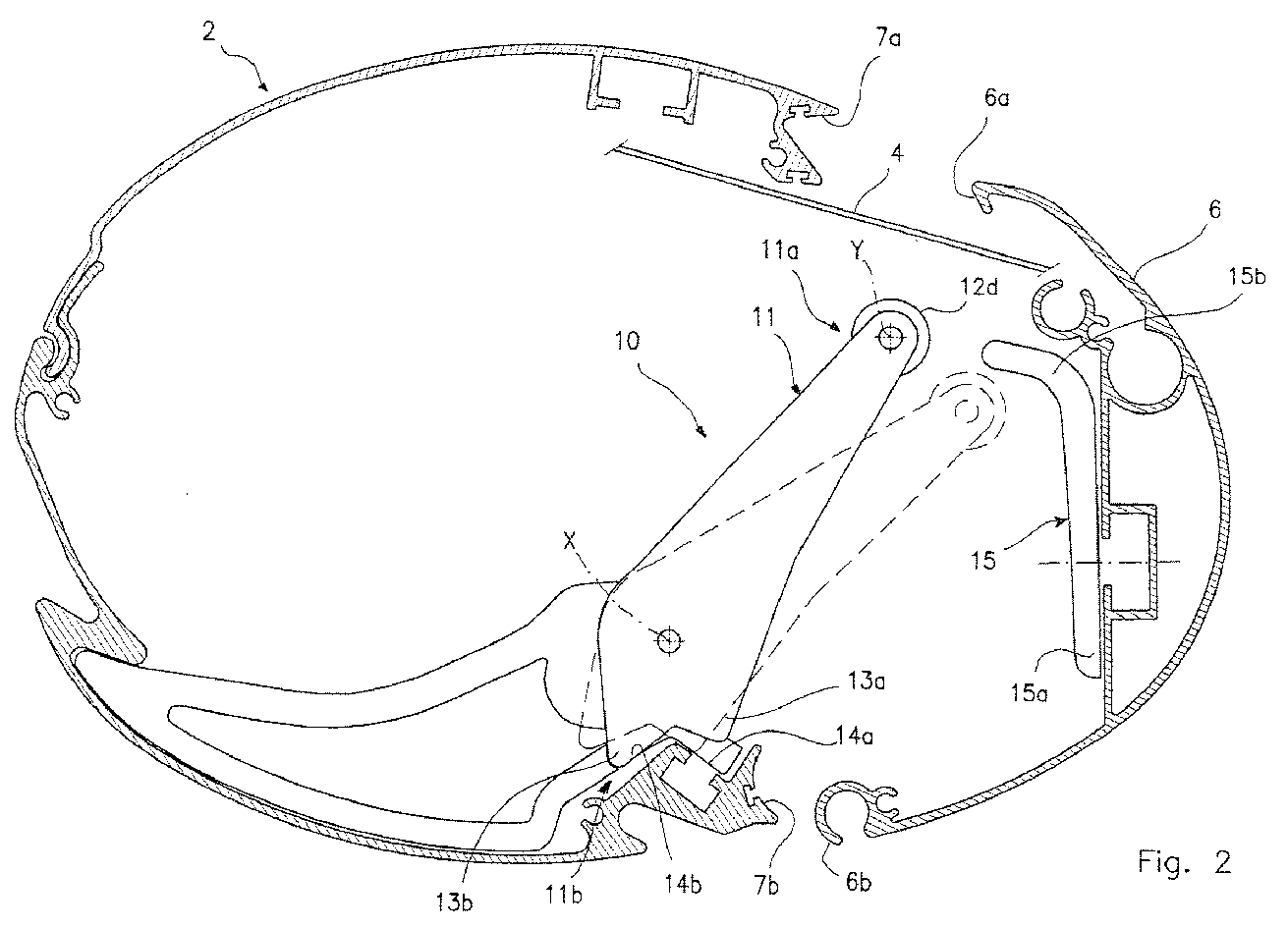(57) What is described is a roller blind comprising a cassette (2) for housing a winding
roller (3), on to which a blind fabric (4) is wound, an aperture (7) being formed
in the cassette for the passage of the fabric in the unwinding and winding of the
latter, the aperture (7) being delimited by a pair of opposing edges (7a,7b) extending
in the direction of longitudinal extension of the cassette (2), and a front strip
(6) which has a pair of corresponding edges (6a,6b) running longitudinally and opposed
to each other and which is fixed to an end (4a) of the fabric (4) transversely opposed
to the roller (3), the strip being movable to close the aperture (7) in the cassette
when the fabric (4) is wound on to the winding roller (3) in an inoperative condition.
The blind comprises at least one guide element (10) fitted in the cassette (2) in
a position such that it interferes with the strip (6) in the approach of the latter
to the cassette, as a result of the winding of the fabric (4) on to the roller (3),
in such a way as to guide the strip (6) in the closing of the aperture (7), with the
longitudinal edges of the strip (6) and the cassette (2) which face each other being
engaged with each other, in opposition to the flexural deformation of the strip.
|

|
